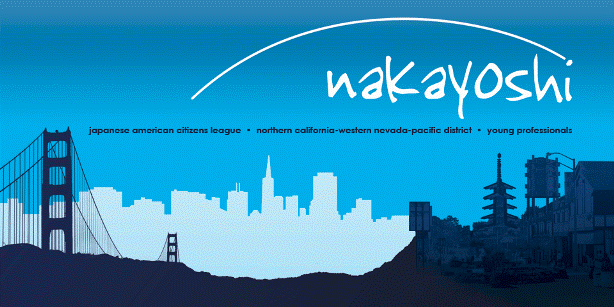 Applications are due January 2009 for the coming spring's 2009 JACL/OCA Leadership Conference, and so I've been asked to provide some reflection on my own conference experience from 2004. Here's a piece I wrote about it that ran in the PC.
Applications are due January 2009 for the coming spring's 2009 JACL/OCA Leadership Conference, and so I've been asked to provide some reflection on my own conference experience from 2004. Here's a piece I wrote about it that ran in the PC.It happened toward the end of this year’s JACL/OCA Leadership Conference, an annual event held in Washington, D.C. bringing together individuals interested in honing their ability to serve the Asian Pacific American community. My fellow participants and I had just polished off our last dinner together, and although we had a handful more sessions scheduled for the next day, the meal signified a closing of sorts. Thank-you gifts were presented to the organizers, a few people gave speeches, and plans for getting to the airport the following afternoon became a subject of conversation. As folks began leaving the restaurant, I picked up a fortune cookie from our table, cracked it open, and found these words: “A good time to start something new.”
Now I’m really not one for omens, especially those packaged in cultural clichés, but I have to admit that at the very least, the cookie made a good point, even if it was in the form of a sentence fragment. Since the conference had provided us participants with thorough instruction on how to address the issues that face community-based, nonprofit organizations like JACL and OCA, the natural next step would be taking what we had absorbed from the experience and using it right away to spark activity back at our own chapters. Although we had come from all over the country and brought with us a diverse set of agendas, the comprehensive education we received over those five days certainly supplied enough insight and inspiration to help each one of us launch our own “something new” upon returning home.
The conference led off with topical seminars examining specific aspects of the Asian Pacific American experience. We heard from a number of speakers about APA interests within the contexts of healthcare, immigration, welfare, community development, gender equality and civil liberties. We also explored the richness and heterogeneity of APA history, reflecting upon the ways in which our ancestors contributed to the assorted legacies of this nation; later on, we would honor this history with visits to the Smithsonian Museum, the Japanese American Memorial to Patriotism, and the home of former JACL president Pat Okura.
In addition to studying these topics, we learned how to handle some of their accompanying challenges by using practical, proven strategies. Specialists walked us through the types of techniques and resources available to our organizations, such as charity lobbying, voter registration, grassroots mobilization, public relations management and coalition building. We also met with policy makers and governmental administrators, who gave us an idea as to how these kinds of processes play out at the highest level in the land. In fact, on the very last day of the conference, we had the exciting chance to speak with four congressmen: Raúl Grijalva (D-AZ), Neil Abercrombie (D-HI), Mike Honda (D-CA), and Ed Case (D-HI). It was a real honor being introduced to these accomplished, hard-working public servants.
On the whole, however, I’d have to say that, as valuable as the encounters with various experts and political heavyweights were, I benefited just as much by getting to know the other participants. I enjoyed chatting with them about the many pursuits and programs they are engaged with, and was curious to find out what different JACL and OCA chapters are up to across the country.
Given everything that we were exposed to at the conference, I would have to say that we should be all set to undertake my fortune cookie’s directive. I imagine that some of us have already begun, seeing as how we concluded the event back on March 16. Personally, I’ve been focusing on trying to apply what I gleaned from the discussions about coalition building and public relations management towards the problem of increasing youth involvement in JA community activities. I still have a lot to do, however, and this article is a way of ensuring that I stay on task by giving readers reason to remind us participants that we should continue seeking out opportunities to make use of the lessons we learned last month. As I said before, I don’t believe in omens, but now is most definitely a “good time to start something new.” It’s just important to keep in mind that fortune cookies don’t enact change—people do.
*Alec MacDonald attended the JACL/OCA DC Leadership Conference in 2004. For more information on how to apply for the 2009 JACL/OCA DC Leadership Conference, please contact Megumi Kaminaga (jaclyouth@gmail.com) or visit http://www.jacl.org/ for official application form.
 Nakayoshi wishes you and your loved ones a warm and merry christmas! With all of the hustle and bustle of the holidays, decorating the christmas tree and holiday trim, baking cookies and wrapping gifts, the holidays also brings out the spirit of friendship and thoughtfulness.
Nakayoshi wishes you and your loved ones a warm and merry christmas! With all of the hustle and bustle of the holidays, decorating the christmas tree and holiday trim, baking cookies and wrapping gifts, the holidays also brings out the spirit of friendship and thoughtfulness. 














